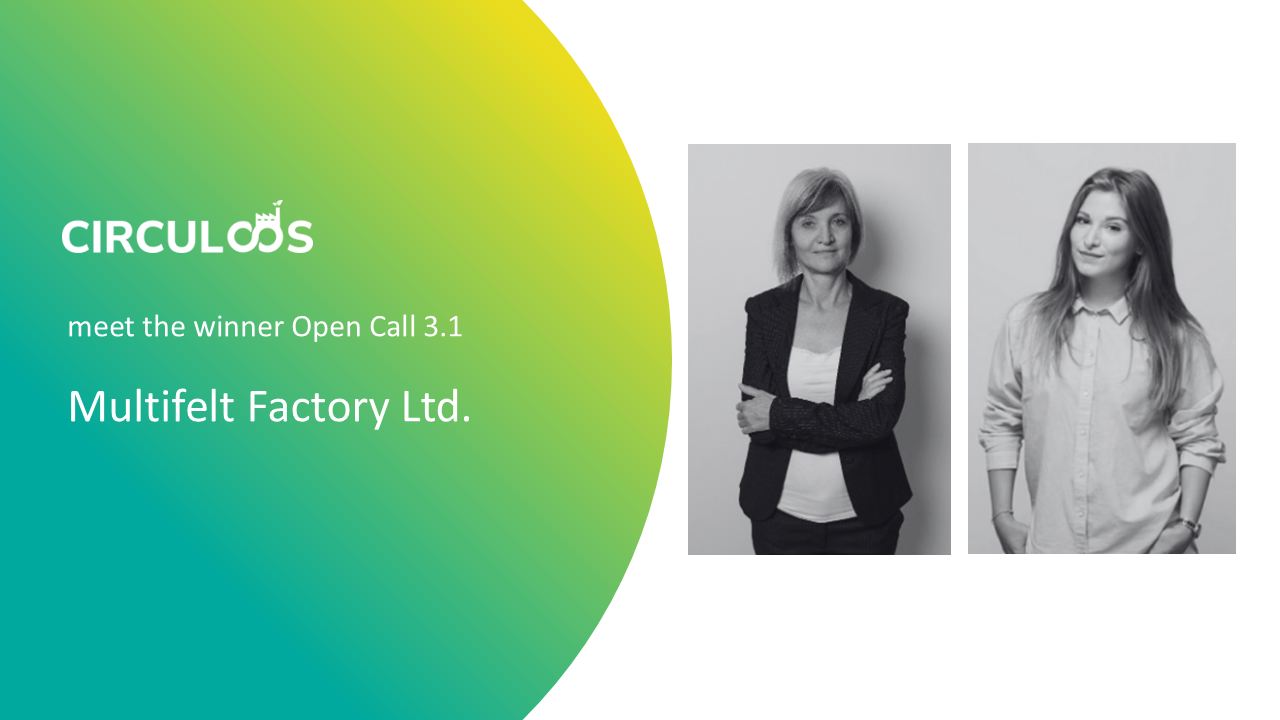To accelerate the shift toward circular manufacturing, CIRCULOOS Open Call 3.1 (OC3.1) supports single entities in extending existing pilot value chains by introducing or enhancing R-strategies such as reuse, remanufacturing, or recycling. Selected projects help improve resource recovery, refine manufacturing processes, and connect with new players to strengthen circularity.
This winning project takes a creative approach to textile and leather waste, transforming felt offcuts into filler for acoustic panels and developing hybrid products—like bags and interior solutions—by combining felt with leather waste from CIRCULOOS pilot partners. By using CIRCULOOS digital tools for traceability and marketplace sharing, the project fosters cross-sector collaboration and builds a model where textile and leather industries exchange resources for new circular applications.
1.Can you briefly introduce your team? What’s your story and what drives you?
Multifelt Factory Ltd. has been producing wool felt in Kőszeg, Hungary for over 125 years, always using 100% wool as our raw material. Over this long history we have combined traditional craftsmanship with continuous innovation, moving from industrial felt rolls to high-quality acoustic panels and design products. Our heritage gives us a deep knowledge of felt as a material, while our ambition pushes us to rethink how it can be used in a modern, sustainable way. What drives us is the belief that natural fibers and circular thinking can provide real alternatives to resource-intensive, synthetic materials. Our team is made up of engineers, production experts, and designers who are motivated by the idea that waste is not an end point but a starting point for new products and value chains. Sustainability and creativity are at the heart of what we do.
2. In simple words, what is your project about and how is it linked with CIRCULOOS?
Our project focuses on turning production waste into valuable new resources. Every day we generate a large volume of felt offcuts and trimmings, and instead of discarding them, we are developing ways to use them as filler materials in acoustic panels. At the same time, we are testing how leather waste from pilot partners can be combined with our felt, for example in hybrid products like bags, pencil cases, or interior solutions.
This links directly with CIRCULOOS, as the initiative is about connecting material flows across sectors. By integrating wool felt waste into the leather pilot line, and by using the CIRCULOOS digital tools for traceability and marketplace sharing, we contribute to building an ecosystem where textile and leather industries can exchange resources and create new circular applications.
3. How did you come up with this project idea/concept and what innovative benefits will it bring to the end users?
The idea grew naturally out of our daily operations: producing felt always results in leftover material. Instead of treating this as a disposal problem, we started asking how it could create value. Our acoustic product line offered the answer — we tested the use of felt waste as filler material and achieved promising results. Extending this approach with leather waste from our partners added a unique cross-sectoral innovation dimension.
For end users such as architects, interior designers, and institutions, the benefits are clear. They receive high-performing acoustic solutions that are natural, recyclable, and free from harmful substances. At the same time, these products support sustainability goals by reducing waste and lowering embodied carbon. The result is a win-win: better indoor environments and a reduced environmental footprint.
4. What type of synergies do you want to explore/are already exploring with other circular economy partners?
We are already working on synergies between the leather and felt industries, testing hybrid materials that combine both types of waste into new product categories. This cross-pollination not only reduces landfill but also creates new design opportunities. For example, acoustic panels filled with shredded felt and leather, or accessories made from mixed material streams.
Looking ahead, we see strong potential in sharing our waste streams digitally via the CIRCULOOS platform. This will allow other industries to access materials they might need, while helping us discover new inputs for our own production. Beyond leather, we are open to collaboration with textile, hemp, or other bio-based sectors facing similar waste challenges, building a broader circular ecosystem.
5. What are your plans for the future when it comes to the development of your ideas & projects?
In the near future, our goal is to move from prototypes to market-ready products. The hybrid fillers and panels we are developing need to be scaled up, certified, and integrated into product lines that designers and institutions can easily adopt. We also want to further develop our digital inventory and traceability practices, building on the experience gained through CIRCULOOS.
Long term, we aim to expand beyond our own waste streams and process materials from other manufacturers as well. By offering shredding and material integration services, we hope to become a hub for regional circular solutions in acoustic and interior design applications. Ultimately, our vision is to contribute to a strong local circular economy that creates environmental and economic value at the same time.


